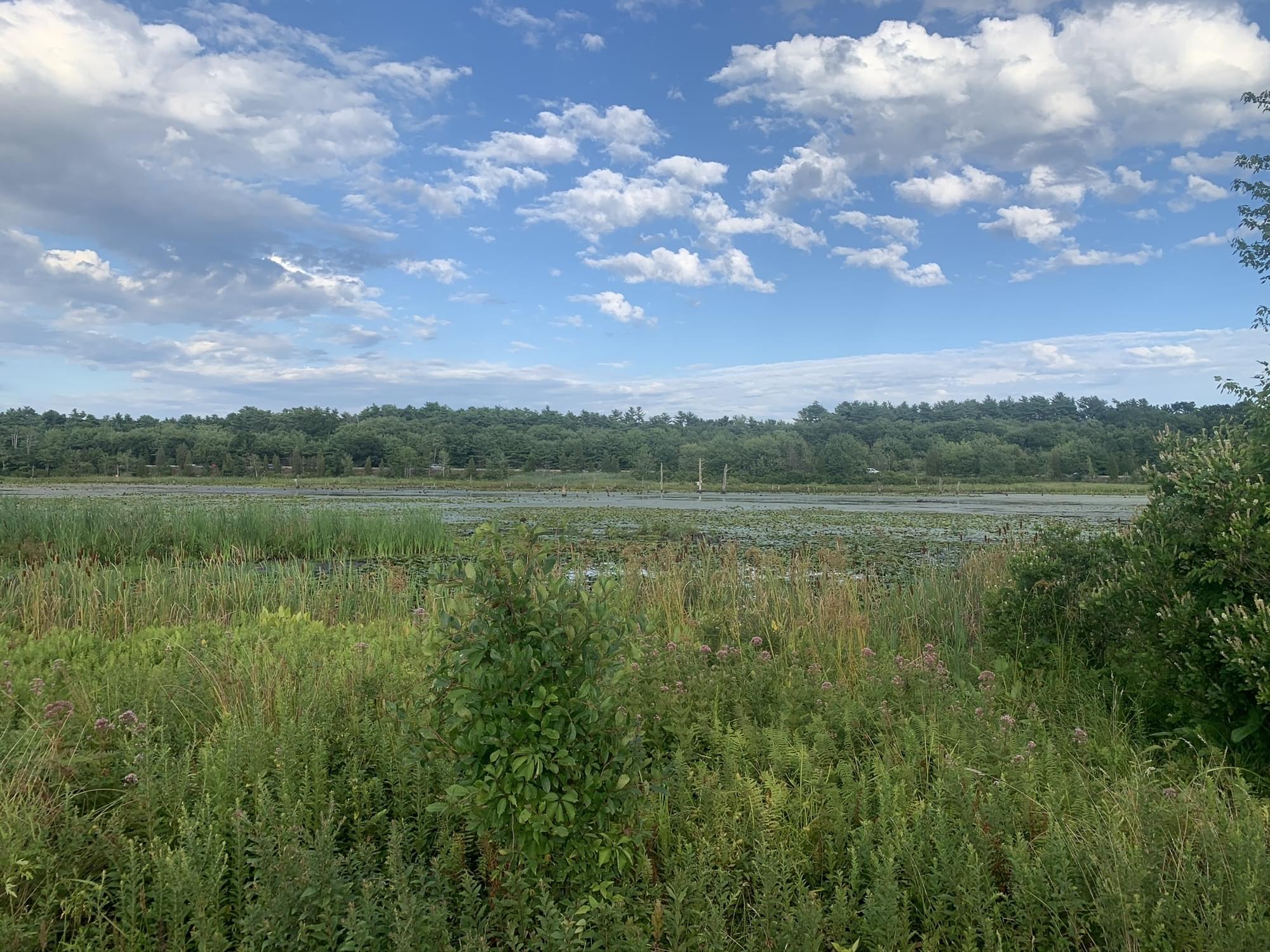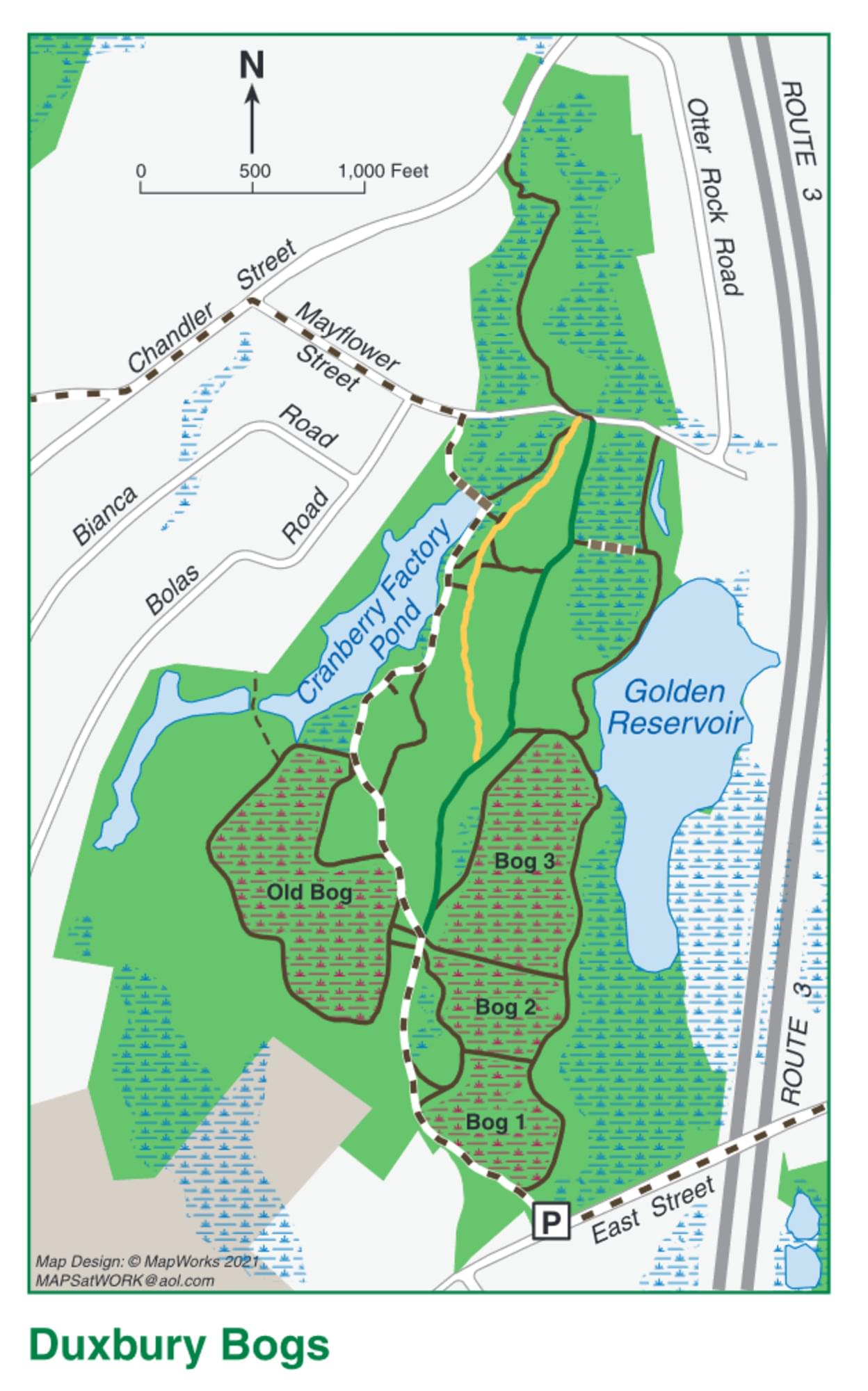Duxbury Bogs Conservation Area

Duxbury Bogs Conservation Area
Duxbury, Massachusetts 02332
Official WebsiteDuxbury Bogs Conservation Area map
About this Location
Duxbury Bogs Conservation Area, 198 acres, features active cranberry bogs, wetlands, reservoirs, and forested uplands, with a 4.5-mile trail network. Occasionally it is closed to the public, for cranberry cultivation and harvesting. Stroller-friendly in some sections.
Also known as East Street Bogs, or Loring Bogs, the Duxbury Bogs were purchased by the Town of Duxbury in 1971 to preserve the agricultural landscape of the cranberry bog. The area includes 39 acres of working bogs plus 191 acres of conservation land. It was first developed in 1927 by F. M. Leonard’s Clearbrook Cranberry Company. Edgar W. Loring took over the enterprise in 1930 and enlarged the farm and its adjacent reservoir significantly. The Loring Bogs employed 8-10 year-round workers and as many as 75 during harvest season.
Before European contact, the Mattakeeset band of the Massachuseuk (or Massachusett) Native American tribe lived for thousands of years in the North River watershed. Their village included most of today’s Pembroke and Hanson as well as parts of Duxbury. Meanwhile, the Patuxet band of the Wampanoag tribe inhabited the Jones River watershed, and the area now known as Kingston, Plymouth, and Duxbury. This property lies within the upper portion of the South River watershed — right between those two territories. It’s possible that both tribes utilized the area.
With a variety of habitats, the Duxbury Bogs attract all sorts of wildlife, especially birds. The ponds are stocked with fish. Most of the land here is cranberry bogs, surrounded by their characteristic roadways, dikes, and canals. However, there are also trails through the woods and along the edge of Cranberry Factory Pond, and another large pond is known as the Sunken Forest, or Golden Reservoir. The woodlands include pine, oak, sumac, fern, milkweed, and bittersweet. There is a glacial esker in the middle of the property. Some of the headwaters of the South River are located here as well.
There are two types of cranberry vines here: Early Black and Howes. Early Blackberries are by far the most common in Massachusetts and were originally cultivated in 1850, in Harwich. They are sold fresh, and also for producing juice. Howes berries are a more recent crop variety, but also very common in Massachusetts. High in pectin, they too are sold fresh, and typically are used for jelly and sauce. All of the cranberry vines at the Duxbury Bogs are at least 100 years old.
Notable Trails
There are 4.5 miles of trails on the property. These are primarily wide dirt roads that encircle the cranberry bogs, but there are also some narrower woodland paths. A 0.8-mile section of the Bay Circuit Trail runs through the property, from East Street to Mayflower Street.
The AllTrails website has a description and map of a hike at Duxbury Bogs Conservation Area.
Features
Restrooms on site
Wheelchair accessible trail
Entrance fee
Content from Official Website
Last updated February 23, 2024
